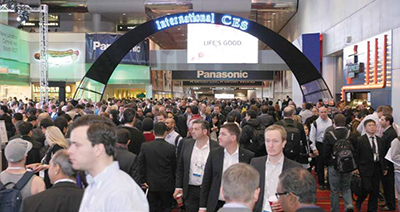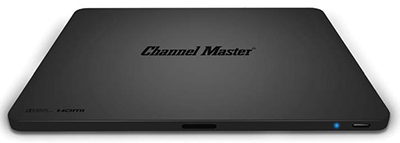Looking Beyond the Numbers at CES

Ultra HD, including its logical successor 8K, was huge at last month’s International CES.
LAS VEGAS—4K display technology was huge at last month’s International CES and some of it made sense to me and some not so much. Many of you will recall that a few articles back I wrote about the 4K tutorial at the SMPTE conference in Hollywood last October. Much of what was presented there that I covered encouraged us to not fixate on the number of pixels but on other factors like high dynamic range, increased frame rate and increased color gamut.
At CES, the focus still seemed to be primarily on resolution. I think that is because resolution is an easy number to specify and explain to buyers at the show and to consumers in the stores. And if the demonstration is set up correctly with the viewer looking at a screen that is one and a half picture height away, the impact is stunning. Displays at Hisense, LG, Sony, Samsung, Panasonic and Sharp all had viewing areas with marks for the screen resolution “sweet spot.” A few even had setups that also provided immersive sound fields that were awesome.
This is one of the reasons I feel that 4K has the potential to resonate with the consumers that 3D could not seem to find. At the right viewing distance, a lot of 4K content creates a more realistic 3D impression than the majority of live action 3D content that I have seen. The challenge is that if you visit virtually any store selling television and displays, they are not set up correctly so much of the impact attributable to resolution will be lost. That will carry over to the consumers home where it is likely the environment will be even less friendly to resolution benefits than the showroom floor.
ENHANCED COLOR REPRODUCTION
One technology that I did find intriguing was not actually on the floor at CES but over in a hospitality suite at the Las Vegas Hotel where QD Vision was demonstrating their ColorIQ nanocrystal technology for providing enhanced color reproduction in edge lit LED displays. While OLED, an emissive technology is impressive, it is still a developing and very expensive so edge lit displays will continue to dominate markets for some time. The drawback is that white LED’s used in the displays are not truly white; they are blue with a phosphor coating that provide a spreading of the light emitted to create green and red emissions. Because the spread of the light is diffused, the color rendering of the images tends to be diffused and lack purity.
QD’s technology involves using blue LEDs as the side lights and inserting a strip of their quantum dot material between the LEDs and the display panel. The quantum dot material is used to essentially tune the light from the LEDs into three extremely coherent and narrow bands of blue, green and red. By eliminating the overlap or diffusing of the primary colors, the images reproduced are much more vibrant. The added benefit is that while the blue light emitted suffers a very minor reduction compared to the white LED, there is a significant increase in the amount of green and red that provides a for a significant increase in color gamut.
According to the representatives of QD Vision, a Lexington, Mass.-based developer of advanced display and lighting technology, the benefit of this technology is that it is easily deployable into existing manufacturing processes on current displays. The benefit that I saw was that the enhanced color reproduction was significant and noticeable regardless of viewing distance from the displays and as I stated above, these types of improvements will do more to impact viewers in their environments than an increased pixel count.
The professional video industry's #1 source for news, trends and product and tech information. Sign up below.
SAMSUNG’S UHD EVOLUTION KIT
Why should I as a broadcaster really care about 4K? Well as I have stated in earlier articles, I look at 4K as a way for IPTV to produce content that is future resistant; the higher the quality of the master, the better it will look upon reproduction.
But what about broadcasting 4K? At CES, the Samsung booth conducted a demonstration of over the air 4K broadcasting. For the show, Sinclair Broadcasting had installed a DVB-T2 transmitter on Black Mountain and was broadcasting a 4K program stream using HEVC encoding within a 6MHz channel which was being received at the Las Vegas Convention Center and displayed on a Samsung 4K television using an outboard receiver that they referred to as the “UHD Evolution Kit.” The idea being that the receiver was an outboard component to the display that could be upgraded through software downloads to add additional capabilities, and in the event that the technology advances beyond the capabilities of the receiver, replacing the receiver component would not require the replacement of the display.

Channel Master’s DVR+ won an International CES Innovations Design and Engineering award. I have been an advocate for this modular approach since the digital conversion began. Since the receiver, not the display is where the majority of incremental changes will occur; having a system that allows for upgrading and replacing that component makes great fiscal sense for the consumer. While the UHD broadcast demonstration was a 30-frame progressive image with standard color space, it proved that the technology exists to both send and receive it. As improvements are made to allow for the image enhancements I have written about, having a receiver technology that can adapt will make it more attractive to the consumers.
DVR MAKEOVER FOR OVER-THE-AIR
Finally, for the last piece of standout technology, I visited with long-time home RF manufacturer Channel Master in a suite at the LVH. Best known for their lines of over-the-air receive antennas, booster amplifiers and passive RF components, they were showing off their DVR+ product. The unit is essentially the replacement for the home VHS recorder that we had in the days of analog but it has a whole lot more game than just that. The DVR+ has two ATSC tuners on board to allow the user to watch one channel while recording another. It allows the user to program recordings to take place automatically and on a regular schedule just like the old VHS.
However since it is using the ATSC digital service, it creates an onboard program guide using the PSIP information broadcast by the terrestrial stations. Now if this was all it did, I would be happy, but there is more.
It is a smart device and includes an Ethernet connector for home networking. There is also an optional USB WiFi adapter. If it is connected to the internet, the DVR+ accesses a web-based electronic program guide service that provides and integrates Internet TV services into the guide. In the interest of full disclosure, the only service I am aware of that is currently supported is VUDU but I am told more services will be added. The onboard 16GB of SSD storage is only good for about 2 hours of recording depending on the programming; the device supports external USB drives up to 1 TB which would equate to approximately 160 hours of HD recording.
What I like most about this is that there is no subscription associated with device. I wish I had the DVR+ when I was traveling all over Iowa explaining to IPTV viewers how digital television worked.
Once the local viewers understood that with very few exceptions, their existing antenna system would work for digital television, the next question was “How do I record and playback television programs on my VCR?” The answer to that question was often a Rube Goldberg arrangement of multiple CECBs with passive splitter and combiners and an instruction set that made the average viewer’s head spin. What was needed was a simple plug in digital video recorder that behaved like their analog VCR and that is the niche that the DVR+ fills.
Bill Hayes is the director of engineering for Iowa Public Television. He can be reached via TV Technology.
Bill Hayes is the former director of engineering and technology for Iowa PBS and has been at the forefront of broadcast TV technology for more than 40 years. He’s a former president of IEEE’s Broadcast Technology Society, is a Partnership Board Member of the International Broadcasting Convention (IBC) and has contributed extensively to SMPTE and ATSC. He is a recipient of Future's 2021 Tech Leadership Award and SMPTE Fellow.

